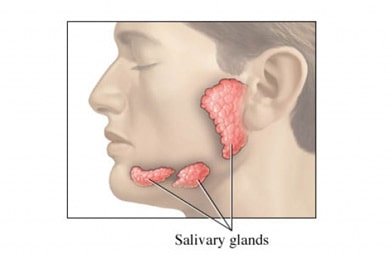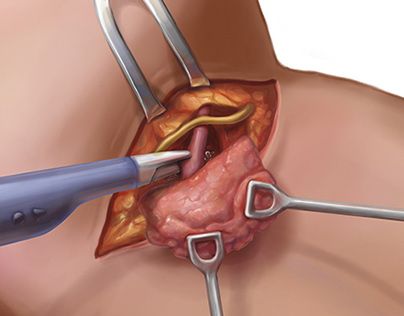Submandibular gland removal in Iran
The main salivary glands are parotid gland, submandibular gland, and sublingual gland. The submandibular gland is apt to many diseases and problems that make life very hard. Therefore, submandibular gland resection could relieve your pains and difficulties. However, you might not have a qualified surgeon and the high facilitation for such operation around or the high cost of such surgery might prevent you from undergoing it in your country. In either case, Iran offers you an exceptional chance to undergo your surgery with the best condition and highest safety with highly qualified ENT surgeons like Dr. Saeedi. For this reason, we wrote this article for you to know more about submandibular gland removal in Iran with Dr. Saeedi. Please make up your mind and decide.
What are submandibular glands?
The mandibular glands are one pair of three main salivary gland pairs, besides the other hundred small glands, most of which are inside the oral cavity. They secrete saliva that helps in the lubrication of the food bolus through the swallowing act. Furthermore, saliva contains amylase that assists in the breakdown of starches in the mouth and plays an important role in protecting dental and oral hygiene, mediation of taste, and assisting the production of hormones, antibodies, and other blood groups–reactive substances; and antimicrobial protection.

The submandibular gland consists of superficial and deep lobes. It is located just below the triangle of mandible bone in the upper part of the neck, and every gland has a duct, called Warton’s duct, that pours saliva in front of the mouth near the lingual frenulum under the tongue. It produces about 70% of the saliva outcome, which consist of mucin and serous and some other materials. Warton’s duct long and salivary stasis in it, as well as the nature of saliva, contribute to forming stones within the duct and the gland.
What are the causes of submandibular gland removal?
The main cause for a salivary gland jaw surgery is an infection, as a result of a recurrent inflammation with bacteria and virus or, in large scale, a canal blockage with a stone, where about 70%-80% of the glands stones are being in the submandibular gland and mainly in its duct.
Some other gland inflammations are related to autoimmune diseases like Sjögren syndrome, or keratoconjunctivitis sicca.
The tumors of the submandibular gland form about 1-2% of all the tumors of the head and neck. Some of it is a metastasis from other areas, but approximately 50% of it is malignant. Initial treatment for these tumors is conservative, but it may need the removal of the submandibular gland for benign tumors and some low-grade malignancies when the conservative treatment fails.
Submandibular gland inflammation symptoms
Patients with acute sialadenitisis may suffer from pain, tenderness upon palpation, swelling, and erythema over the area. Purulent material may be noticed in warton’s duct by applying some pressure upon the duct, and a metallic taste may be sensed in the mouth.
While the submandibular gland swelling of the duct or the gland itself may be as a result of salivary stones, but it may cause a colicky peri-prandial pain.
Submandibular gland inflammatory complications
When the gland in an advanced state of illness, it may cause recurrent infection and severe pains that may threaten life. However, this condition is very rare.
What is submandibular gland excision?
In some cases, the surgeon removes the stone from the duct by sialendoscopic or by ultrasound wave, but if the stone is far away in the duct or if it in the gland itself and in case of recurrent inflammation or in some cases of submandibular gland tumors, excision will be necessary.

Other surgical management is salivary gland surgery for drooling, especially in children, which includes several types of procedures like salivary duct ligation, salivary duct relocation, and salivary gland excision.
Why opt for submandibular gland resection in Iran?
Iran’s hospitals have good equipment and highly certified surgeons. Above all, submandibular gland removal low prices in Iran are very affordable due to the cheap local currency compared to foreign currencies. You may enjoy the Iranian historical and cultural memorial and charming nature in addition to having the surgery done by an experienced surgeon.
Submandibular gland removal in Iran with Dr. Saeedi
Dr. Masoumeh Saeedi stands out among the best ENT surgeons in Iran due to her distinction and having obtained a fellowship in head and neck surgery for more than 12 years and was ranked first in the entrance examination to it.
Since then, Dr. Saeedi has performed more than 5,000 successful surgeries including several submandibular gland resection surgeries for Iranian and foreign patients.
Due to her distinction, Dr. Saeedi managed to become an associate professor at Baqiatallah University of Medical Sciences in Tehran when she was only 33 years old. In addition to this, Dr. Saeedi took part in many specialized courses in countries such as France, Germany, Portugal, South Korea, Malaysia, and others in order remain up to date of the latest global methods and technologies in her specialization.
By having a submandibular gland removal in Iran with Dr. Saeedi, you rest assured to have the best results due to the doctor’s high experience. You can now get a free online consultation for submandibular gland removal in Iran with Dr. Saeedi.
Cost of submandibular gland removal in Iran with Dr. Saeedi
The submandibular gland removal cost in U. S. A is about $8,000-$11,000, while the cost of submandibular gland excision in Iran with Dr. Saeedi is much more affordable. Contact us now to have a free online consultation and quote for submandibular gland removal in Iran with Dr. Saeedi.
Who is to undergo submandibular gland surgery?
The submandibular gland needs to be removed in some cases of recurrent inflammatory (sialadenitis), in cases of sialolithiasis that cannot be cured by conservative treatment or by sialendoscopic, in some cases of noninflammatory enlargement glands (sialadenosis) for patients with advanced liver cirrhosis, and in some cases of primary cancer. Drooling (sialorrhea) in the children may be another cause for surgical resection for the submandibular gland.
Preparation for submandibular gland surgery
Some submandibular gland steps before surgery are necessary for a diagnosis like CT scan, sialogram, and X-rays image. After that, you should:
- Stop blood thinner several days before the surgery.
- Have some blood tests, a cardio exam and chest imaging.
- Stop eating and drinking at midnight on the day of surgery.
Submandibular gland removal surgery: How is it done?
The submandibular gland excision is performed under general anesthesia, and salivary gland surgery duration takes about 45 minutes to an hour.
The submandibular resection technique is done by making an incision in the upper part of the neck below the mandible bone and removing the gland. Sometimes in salivary gland blockage removal after submandibular gland surgery excision, the surgeon makes another incision within the mouth to remove the stone from Warton’s duct. The surgeon then puts a drain and closes the incision with sutures.
Submandibular gland removal recovery: what to expect?
Most patients of submandibular gland excision remain for 1-4 days in the hospital post operation. The surgeon removes the drain before discharging and provides you with a prescription, while the stitches may need 7-10 days to be removed after surgery.
During recovery time of salivary gland surgery, you should not do hard strenuous activity. After that, you may do exercise and return to your work.
You may feel numb in the neck skin under your procedure incision because some of your nerves had been cut during the surgery.
Pros and cons of Submandibular salivary gland removal
Like any other surgery, the surgery to remove the submandibular salivary gland has advantages and disadvantages. While the surgery itself is safe, choosing a highly experienced surgeon may lessen the negative side effects.
Submandibular gland resection benefits
Surgery abolishes the swelling, pain, and the unpleasant taste in the mouth. It also assists in finding out the reason for an enlarged gland.
Submandibular salivary gland removal surgery risks and complications
Submandibular gland removal complications may include:
- Pain
- Bleeding
- Submandibular gland removal scar.
- Damage to nerves
- Infection of the surgical site (wound)
Submandibular gland removal side effects may include nerve damage. Three nerves: hypoglossal nerve, lingual nerve, and marginal mandibular nerve are at risk in the surgery. The first one powers the muscles of the lower lip. It is very delicate, and the surgeon may hurt it during the procedure resulting in a lopsided smile. The second is larger and supplies sensation to one side of the tongue. The surgeon maintains the nerve during the procedure, but nerve damage may happen during submandibular gland excision while the surgeon attempts to stop bleeding or because of a nerve overstretching during the procedure, which may cause numbness or tingling of one side of the tongue.
What are the contraindication cases for submandibular gland surgery?
The main cause of abolishing surgery is a tumor, where another kind of treatment is used here (radiation therapy). While in cases of patients who are unable to tolerate general anesthesia, the procedure might be done under local anesthesia.
Frequently asked question about submandibular gland surgery
Can submandibular gland resection surgery cause a deficiency of salivary outcome after surgery?
In general, the other salivary glands compensate and produce sufficient amounts of salivary after the operation.
Is submandibular gland surgery dangerous?
Generally speaking, it is a safe surgery. The injury of some nerves during the procedure or subsequently on dealing with bleeding after surgery may cause permanent effect as a lop lip or numbness in half of the tongue at the side of the procedure. The highly experienced surgeon may offer you an excellent result.
Is submandibular gland surgery outpatient?
The patient remains usually one night in the hospital under supervision, after that the surgeon removes the drain and discharges the patient. Some patients may need more time in the hospital according to the surgeon’s advice.
Do I need any time off work to undergo submandibular gland resection surgery?
Generally, salivary gland surgery recovery needs 7 days. After that, you may return to your work. In little cases, you may need more time to recover. In all conditions, you should avoid hard activity, and it is recommended to walk about half an hour twice a day.
What is the salivary gland dry eye?
It is the implantation of the labial salivary gland with overlying mucosa as a complex graft to the posterior lamella of eyelids to lessen discomfort and pain in dry eye.

